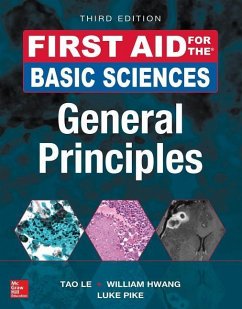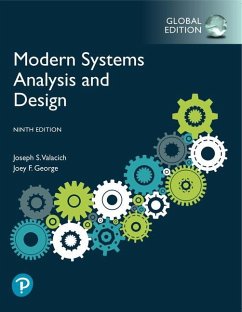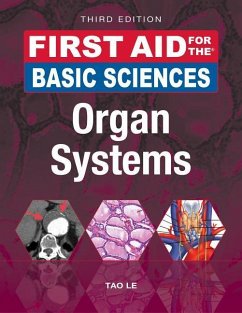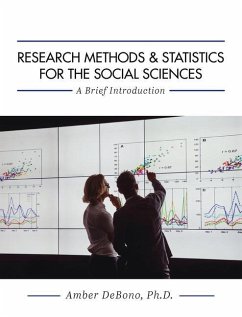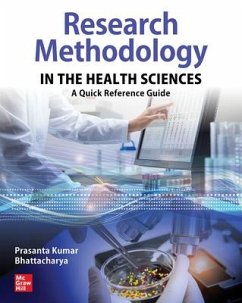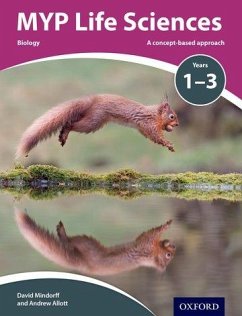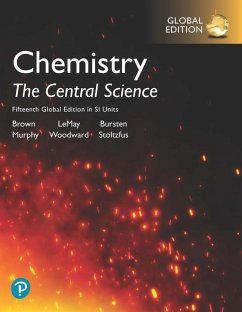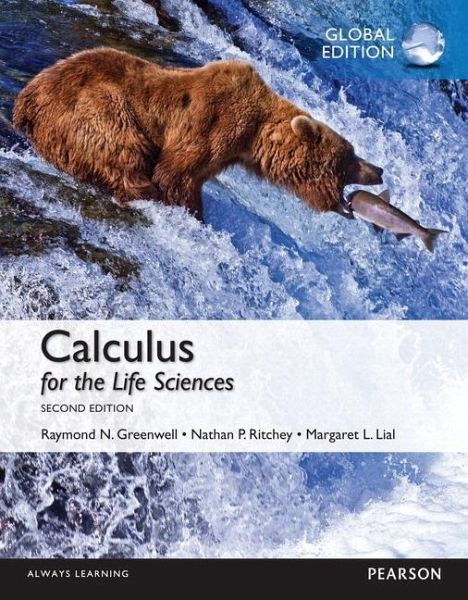
Calculus for the Life Sciences: Global Edition

PAYBACK Punkte
44 °P sammeln!
Calculus for the Life Sciences features interesting, relevant applications that motivate students and highlight the utility of mathematics for the life sciences. This edition also features new ways to engage students with the material, such as Your Turn exercises. The MyMathLab® course for the text provides online homework supported by learning resources such as video tutorials, algebra help, and step-by-step examples.
Teaching and Learning Experience
This program will provide a better teaching and learning experience. Here’s how:
Personalized help with MyMathLab: MyMathLab delivers proven results by personalizing the learning process.
Motivation: Students constantly see the math applied to the life sciences.
Built for student success: Proven pedagogy, robust exercise sets, and comprehensive end-of-chapter material help students succeed in the course.
Features + Benefits
Motivation: Students constantly see the math applied to the life sciences.
A wide variety of life science applications reference real data from current sources. A complete list of these sources is at www.pearsonhighered.com/mathstatsresources .
Apply It (formerly called “Think About It”) opens most sections with a provocative, real-world oriented question that is addressed in the exposition and exercises.
Applied exercises are grouped by type of application and highlighted for easy identification.
Extended Applications appear at the end of all chapters to stimulate student interest and foster in-depth learning.
Index of Applications provides instructors and students with an overview of the types of applications throughout the book.
NEW! Application exercises within MyMathLab are now labeled by type of application.
Built for student success: Proven pedagogy, robust exercise sets, and comprehensive end-of-chapter material help students succeed in the course.
Learning aids appear at key points to help students learn the key ideas.
NEW! “Your Turn” exercises following selected examples provide students with an easy way to stop and check their understanding of the skill or concept being presented. Answers are provided at the end of the section’s exercises.
Caution boxes warn students of common errors/misconceptions and Note boxes offer additional useful information. Both are highlighted for easy reference.
Chapter Reviews are structured to help students prepare for tests.
NEW! A list of important formulas and definitions has been added.
NEW! Review exercises now begin with Concept Check exercises—a series of true/false exercises designed to assess key ideas.
NEW! The answers for review exercises (at the back of the book) now include a table listing the examples within the chapter that are most similar to each review exercise.
Help for Gaps in Prerequisite Skills for students who need it.
NEW! The Prerequisite Skills Diagnostic Test, just prior to Chapter R, gives students and instructors an opportunity to assess students’ skills on topics that are critical to success in this course. Answers reference specific review material in the text for targeted remediation.
“For Review” boxes in the margin provide immediate review, or refer students back to appropriate sections as needed.
Algebra Reference Chapter R appears at the beginning of the text, allowing students to brush up on their algebra skills.
Diverse exercise sets show how math is used in the life sciences.
Writing Exercises, denoted with an icon, provide students with an opportunity to write about important mathematical ideas.
Technology Exercises, denoted with an icon, explore concepts using a graphing calculator or spreadsheet.
Connection Exercises, denoted with an icon, integrate topics/concepts from different sections.
Concept Check exercises in the Chapter reviews help students verify their understanding of important topics.
Technology coverage allows you to include as much or as little use of technology as you prefer.
NEW! The updated design makes it easier to identify technology coverage so instructors can more easily highlight (or skip) the material.
Excel® Spreadsheets are included in examples and exercises where appropriate, allowing students to work problems that closely relate to life science applications.
Graphing Calculator discussions are included in many examples, but are not essential for understanding the text. Figures depicting graphing calculator screens now feature the new TI MathPrint™ operating system.
Graphing Calculator Manual and Excel Spreadsheet Manual provide step-by-step assistance for students and follow the order of topics within the course. Both are available for download within MyMathLab.
R. Algebra Reference
R.1 Polynomials
R.2 Factoring
R.3 Rational Expressions
R.4 Equations
R.5 Inequalities
R.6 Exponents
R.7 Radicals
1. Functions
1.1 Lines and Linear Functions
1.2 The Least Squares Line
1.3 Properties of Functions
1.4 Quadratic Functions; Translation and Reflection
1.5 Polynomial and Rational Functions
Chapter Review
Extended Application: Using Extrapolation to Predict Life Expectancy
2. Exponential, Logarithmic, and Trigonometric Functions
2.1 Exponential Functions
2.2 Logarithmic Functions
2.3 Applications: Growth and Decay
2.4 Trigonometric Functions
Chapter Review
Extended Application: Power Functions
3. The Derivative
3.1 Limits
3.2 Continuity
3.3 Rates of Change
3.4 Definition of the Derivative
3.5 Graphical Differentiation
Chapter Review
Extended Application: A Model For Drugs Administered Intravenously
4. Calculating the Derivative
4.1 Techniques for Finding Derivatives
4.2 Derivatives of Products and Quotients
4.3 The Chain Rule
4.4 Derivatives of Exponential Functions
4.5 Derivatives of Logarithmic Functions
4.6 Derivatives of Trigonometric Functions
Chapter Review
Extended Application: Managing Renewable Resources
5. Graphs and the Derivative
5.1 Increasing and Decreasing Functions
5.2 Relative Extrema
5.3 Higher Derivatives, Concavity, and the Second Derivative Test
5.4 Curve Sketching
Chapter Review
Extended Application: A Drug Concentration Model for Orally Administered Medications
6. Applications of the Derivative
6.1 Absolute Extrema
6.2 Applications of Extrema
6.3 Implicit Differentiation
6.4 Related Rates
6.5 Differentials: Linear Approximation
Chapter Review
Extended Application: A Total Cost Model for a Training Program
7. Integration
7.1 Antiderivatives
7.2 Substitution
7.3 Area and the Definite Integral
7.4 The Fundamental Theorem of Calculus
7.5 The Area Between Two Curves
Chapter Review
Extended Application: Estimating Depletion Dates for Minerals
8. Further Techniques and Applications of Integration
8.1 Numerical Integration
8.2 Integration by Parts
8.3 Volume and Average Value
8.4 Improper Integrals
Chapter Review
Extended Application: Flow Systems
9. Multivariable Calculus
9.1 Functions of Several Variables
9.2 Partial Derivatives
9.3 Maxima and Minima
9.4 Total Differentials and Approximations
9.5 Double Integrals
Chapter Review
Extended Application: Optimization for a Predator
10. Matrices
10.1 Solution of Linear Systems
10.2 Addition and Subtraction of Matrices
10.3 Multiplication of Matrices
10.4 Matrix Inverses
10.5 Eigenvalues and Eigenvectors
Chapter Review
Extended Application: Contagion
11. Differential Equations
11.1 Solutions of Elementary and Separable Differential Equations
11.2 Linear First-Order Differential Equations
11.3 Euler's Method
11.4 Linear Systems of Differential Equations
11.5 Non-Linear Systems of Differential Equations
11.6 Applications of Differential Equations
Chapter Review
Extended Application: Pollution of the Great Lakes
12. Probability
12.1 Sets
12.2 Introduction to Probability
12.3 Conditional Probability; Independent Events; Bayes' Theorem
12.4 Discrete Random Variables; Applications to Decision Making
Chapter Review
Extended Application: Medical Diagnosis
13. Probability and Calculus
13.1 Continuous Probability Models
13.2 Expected Value and Variance of Continuous Random Variables.
13.3 Special Probability Density Functions
Chapter Review
Extended Application: Exponential Waiting Times
14. Discrete Dynamical Systems
14.1 Sequences
14.2 Equilibrium Points
14.3 Determining Stability
Chapter Review
Extended Application: Mathematical Modeling in a Dynamic World
Special Topics (available online)
Sequences and Series
Geometric Sequences
Annuities: An Application of Sequences
Taylor Polynomials
Infinite Series
Taylor Series
Newton’s Method
L’Hôpital’s Rule
Markov Chains
Teaching and Learning Experience
This program will provide a better teaching and learning experience. Here’s how:
Personalized help with MyMathLab: MyMathLab delivers proven results by personalizing the learning process.
Motivation: Students constantly see the math applied to the life sciences.
Built for student success: Proven pedagogy, robust exercise sets, and comprehensive end-of-chapter material help students succeed in the course.
Features + Benefits
Motivation: Students constantly see the math applied to the life sciences.
A wide variety of life science applications reference real data from current sources. A complete list of these sources is at www.pearsonhighered.com/mathstatsresources .
Apply It (formerly called “Think About It”) opens most sections with a provocative, real-world oriented question that is addressed in the exposition and exercises.
Applied exercises are grouped by type of application and highlighted for easy identification.
Extended Applications appear at the end of all chapters to stimulate student interest and foster in-depth learning.
Index of Applications provides instructors and students with an overview of the types of applications throughout the book.
NEW! Application exercises within MyMathLab are now labeled by type of application.
Built for student success: Proven pedagogy, robust exercise sets, and comprehensive end-of-chapter material help students succeed in the course.
Learning aids appear at key points to help students learn the key ideas.
NEW! “Your Turn” exercises following selected examples provide students with an easy way to stop and check their understanding of the skill or concept being presented. Answers are provided at the end of the section’s exercises.
Caution boxes warn students of common errors/misconceptions and Note boxes offer additional useful information. Both are highlighted for easy reference.
Chapter Reviews are structured to help students prepare for tests.
NEW! A list of important formulas and definitions has been added.
NEW! Review exercises now begin with Concept Check exercises—a series of true/false exercises designed to assess key ideas.
NEW! The answers for review exercises (at the back of the book) now include a table listing the examples within the chapter that are most similar to each review exercise.
Help for Gaps in Prerequisite Skills for students who need it.
NEW! The Prerequisite Skills Diagnostic Test, just prior to Chapter R, gives students and instructors an opportunity to assess students’ skills on topics that are critical to success in this course. Answers reference specific review material in the text for targeted remediation.
“For Review” boxes in the margin provide immediate review, or refer students back to appropriate sections as needed.
Algebra Reference Chapter R appears at the beginning of the text, allowing students to brush up on their algebra skills.
Diverse exercise sets show how math is used in the life sciences.
Writing Exercises, denoted with an icon, provide students with an opportunity to write about important mathematical ideas.
Technology Exercises, denoted with an icon, explore concepts using a graphing calculator or spreadsheet.
Connection Exercises, denoted with an icon, integrate topics/concepts from different sections.
Concept Check exercises in the Chapter reviews help students verify their understanding of important topics.
Technology coverage allows you to include as much or as little use of technology as you prefer.
NEW! The updated design makes it easier to identify technology coverage so instructors can more easily highlight (or skip) the material.
Excel® Spreadsheets are included in examples and exercises where appropriate, allowing students to work problems that closely relate to life science applications.
Graphing Calculator discussions are included in many examples, but are not essential for understanding the text. Figures depicting graphing calculator screens now feature the new TI MathPrint™ operating system.
Graphing Calculator Manual and Excel Spreadsheet Manual provide step-by-step assistance for students and follow the order of topics within the course. Both are available for download within MyMathLab.
R. Algebra Reference
R.1 Polynomials
R.2 Factoring
R.3 Rational Expressions
R.4 Equations
R.5 Inequalities
R.6 Exponents
R.7 Radicals
1. Functions
1.1 Lines and Linear Functions
1.2 The Least Squares Line
1.3 Properties of Functions
1.4 Quadratic Functions; Translation and Reflection
1.5 Polynomial and Rational Functions
Chapter Review
Extended Application: Using Extrapolation to Predict Life Expectancy
2. Exponential, Logarithmic, and Trigonometric Functions
2.1 Exponential Functions
2.2 Logarithmic Functions
2.3 Applications: Growth and Decay
2.4 Trigonometric Functions
Chapter Review
Extended Application: Power Functions
3. The Derivative
3.1 Limits
3.2 Continuity
3.3 Rates of Change
3.4 Definition of the Derivative
3.5 Graphical Differentiation
Chapter Review
Extended Application: A Model For Drugs Administered Intravenously
4. Calculating the Derivative
4.1 Techniques for Finding Derivatives
4.2 Derivatives of Products and Quotients
4.3 The Chain Rule
4.4 Derivatives of Exponential Functions
4.5 Derivatives of Logarithmic Functions
4.6 Derivatives of Trigonometric Functions
Chapter Review
Extended Application: Managing Renewable Resources
5. Graphs and the Derivative
5.1 Increasing and Decreasing Functions
5.2 Relative Extrema
5.3 Higher Derivatives, Concavity, and the Second Derivative Test
5.4 Curve Sketching
Chapter Review
Extended Application: A Drug Concentration Model for Orally Administered Medications
6. Applications of the Derivative
6.1 Absolute Extrema
6.2 Applications of Extrema
6.3 Implicit Differentiation
6.4 Related Rates
6.5 Differentials: Linear Approximation
Chapter Review
Extended Application: A Total Cost Model for a Training Program
7. Integration
7.1 Antiderivatives
7.2 Substitution
7.3 Area and the Definite Integral
7.4 The Fundamental Theorem of Calculus
7.5 The Area Between Two Curves
Chapter Review
Extended Application: Estimating Depletion Dates for Minerals
8. Further Techniques and Applications of Integration
8.1 Numerical Integration
8.2 Integration by Parts
8.3 Volume and Average Value
8.4 Improper Integrals
Chapter Review
Extended Application: Flow Systems
9. Multivariable Calculus
9.1 Functions of Several Variables
9.2 Partial Derivatives
9.3 Maxima and Minima
9.4 Total Differentials and Approximations
9.5 Double Integrals
Chapter Review
Extended Application: Optimization for a Predator
10. Matrices
10.1 Solution of Linear Systems
10.2 Addition and Subtraction of Matrices
10.3 Multiplication of Matrices
10.4 Matrix Inverses
10.5 Eigenvalues and Eigenvectors
Chapter Review
Extended Application: Contagion
11. Differential Equations
11.1 Solutions of Elementary and Separable Differential Equations
11.2 Linear First-Order Differential Equations
11.3 Euler's Method
11.4 Linear Systems of Differential Equations
11.5 Non-Linear Systems of Differential Equations
11.6 Applications of Differential Equations
Chapter Review
Extended Application: Pollution of the Great Lakes
12. Probability
12.1 Sets
12.2 Introduction to Probability
12.3 Conditional Probability; Independent Events; Bayes' Theorem
12.4 Discrete Random Variables; Applications to Decision Making
Chapter Review
Extended Application: Medical Diagnosis
13. Probability and Calculus
13.1 Continuous Probability Models
13.2 Expected Value and Variance of Continuous Random Variables.
13.3 Special Probability Density Functions
Chapter Review
Extended Application: Exponential Waiting Times
14. Discrete Dynamical Systems
14.1 Sequences
14.2 Equilibrium Points
14.3 Determining Stability
Chapter Review
Extended Application: Mathematical Modeling in a Dynamic World
Special Topics (available online)
Sequences and Series
Geometric Sequences
Annuities: An Application of Sequences
Taylor Polynomials
Infinite Series
Taylor Series
Newton’s Method
L’Hôpital’s Rule
Markov Chains
Calculus for the Life Sciences features interesting, relevant applications that motivate students and highlight the utility of mathematics for the life sciences. This edition also features new ways to engage students with the material, such as Your Turn exercises.
Dieser Artikel kann nur an eine deutsche Lieferadresse ausgeliefert werden.





